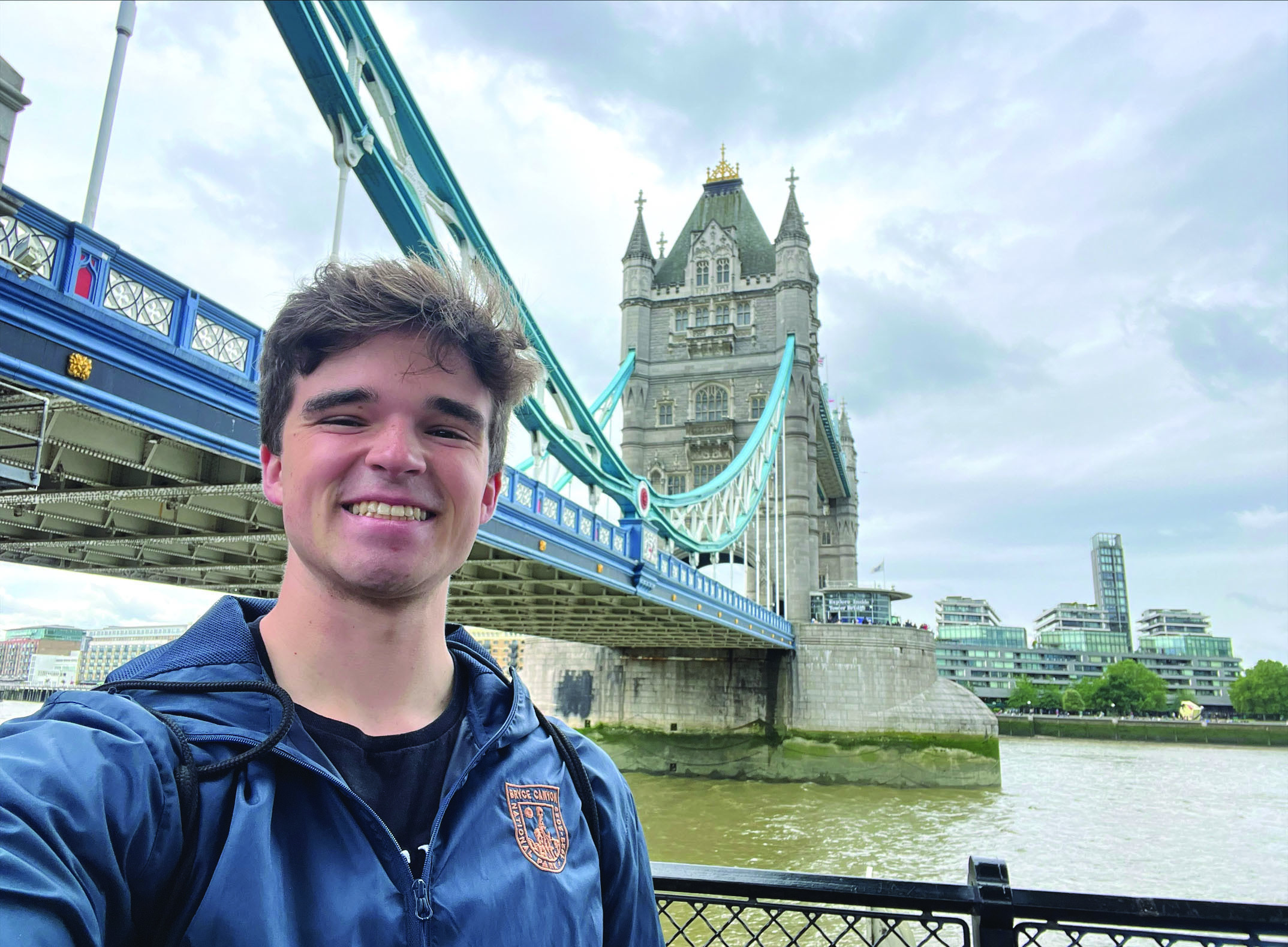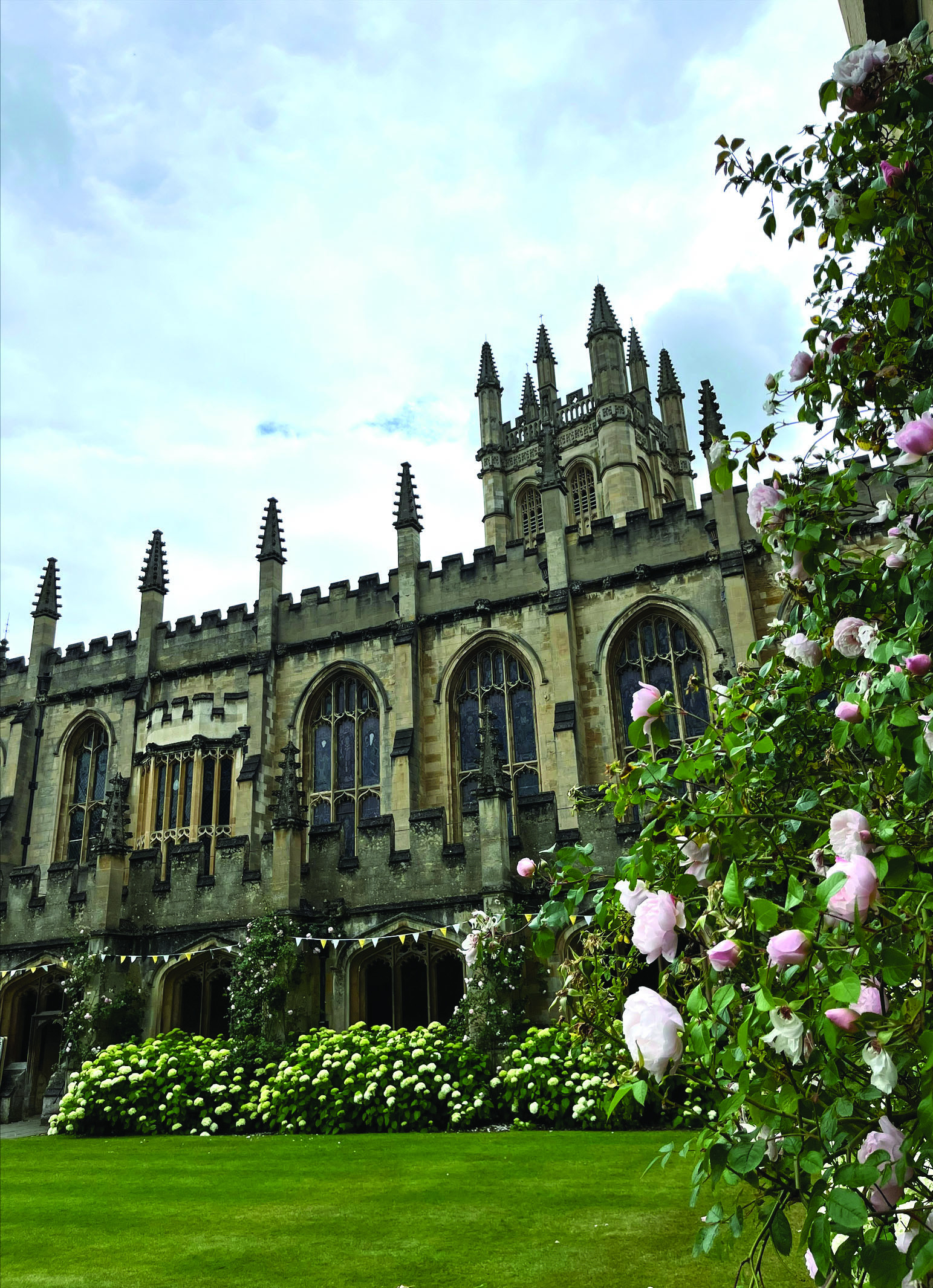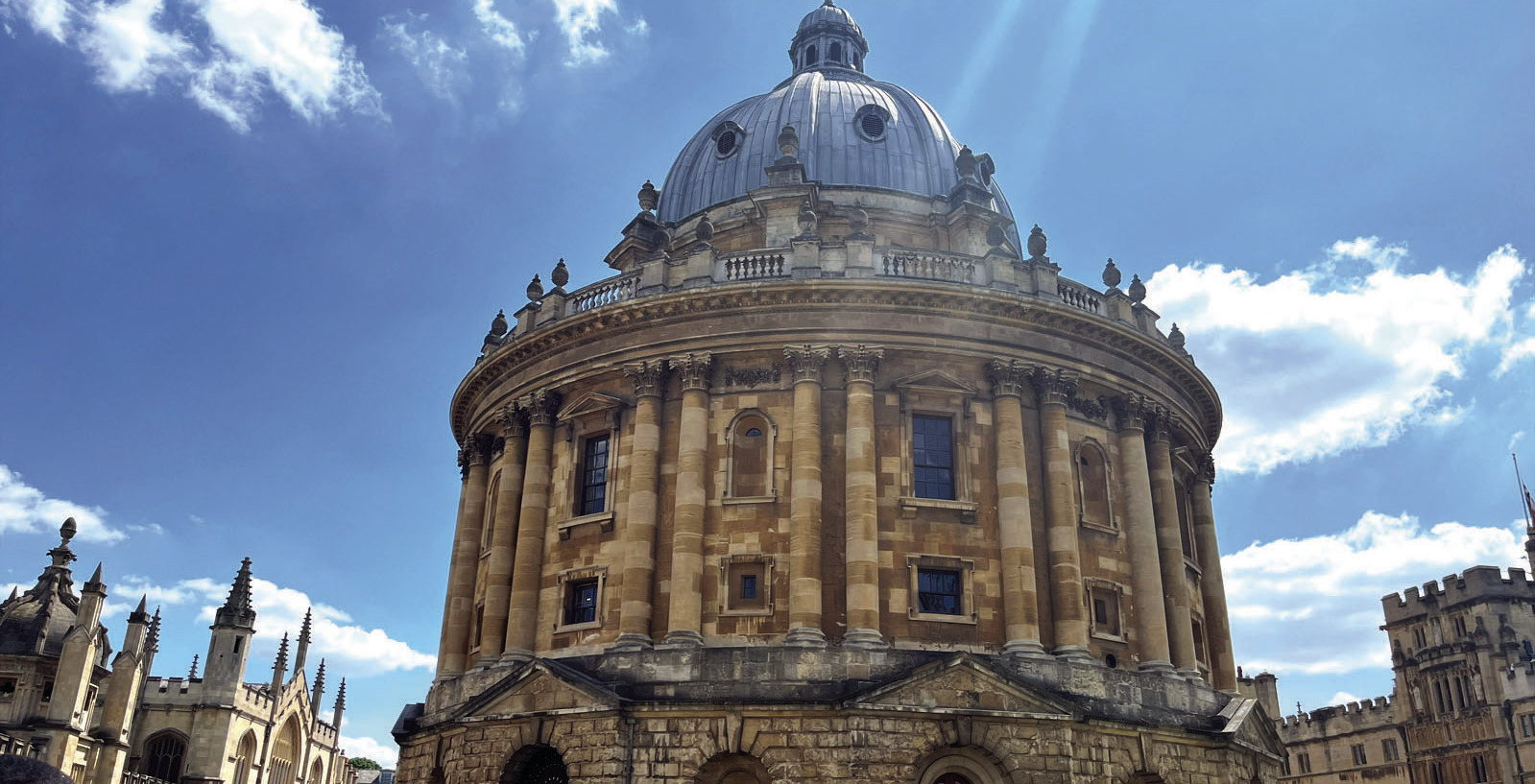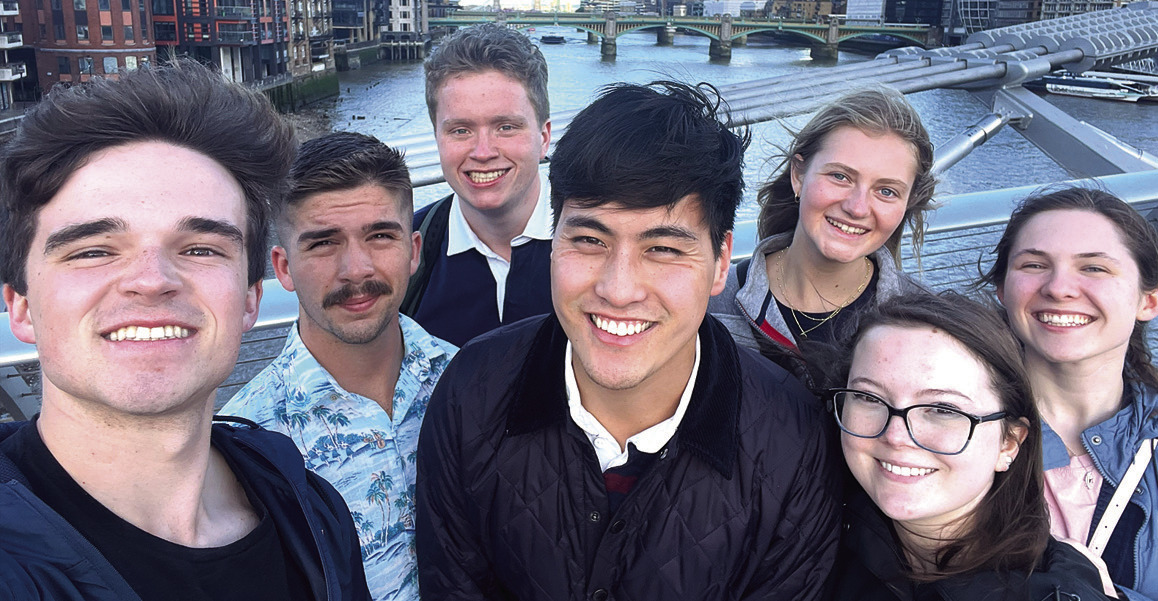W&L Student Offers Tips Learned During Summer Visit
Editor’s note: Chas Chappell, a rising senior at Washington and Lee University and a journalism major, attended Oxford University for six weeks this summer to study English. He is also a budding travel writer and is sharing his thoughts on how to see Europe on a budget. This is the first part of a four-part series he has written, which also includes videos by Chas, links to which can be found on our website.
Growing up, I thought the only people who traveled to Europe wore diamond watches, ate gold-flake caviar and only sat courtside. Now I know they can also eat dining hall food, drive 2007 Hyundai Sonatas and wear old shoes their mom keeps telling them to throw away.
I’m Chas Chappell, a Washington and Lee student lucky enough to be studying the literature and history of the English Rennaissance in Oxford this summer. While there, I’ll be taking low-cost, high-quality trips around the UK, but also to Germany, Italy and Ireland. This is my experience traveling to London and Oxford on the cheap – and how you can do it too.
First, I scoured the internet for a cheap flight. Ticket prices are lowest in the winter and highest in the summer. My Oxford program started on June 24, but February is the cheapest time to go if you’ve got flexibility.
Most flights to Europe are overnight. I booked a few months in advance and found a reasonably priced nonstop so I could (hopefully) sleep through the seven-hour flight. But you can bring the cost down further by adding a layover.
Iceland and Portugal are two of the easiest countries to reach from the states. They leverage convenient “halfway” points to market cheaper paths to the rest of Europe. A ticket to London through Reykjavik is $285 through Icelandair. That’s cheaper than some domestic destinations, like San Francisco.
National governments subsidize these flights to boost tourism in their own country. If you decide to book with TAP Air Portugal, you’ll get several offers to extend your stay in Lisbon past a layover. If you’re not interested, you can stick with a 1-2 hour stop and reap the savings. To learn more about flying cheap to Europe, check out my companion video.
With my flight booked, I went to Dulles Airport (2.5 hour drive from Lexington) to board my plane, which left at 7:30 in the evening. I’m a college student with the sleep schedule to match, so trying to catch Zs in an upright seat was a challenge.
Did I succeed? Sort of. My sleep mask and neck pillow made things a bit comfier, enough to fade in and out of consciousness for a few hours. London is five hours ahead of Lexington, so landing at 7:30 a.m. felt like 2:30 a.m. to me. With adrenaline - and a breakfast Diet Coke to power me through, I made my way through Heathrow Airport.
In movies, going through customs looks like a long and stressful experience. On the moving walkway, I rehearsed my answers to “What is the purpose of your visit?” and “How long are you staying?” But the United Kingdom is one of many countries that now uses E-gates – so I scanned my passport and got through in under 15 minutes.
Next, I went to look for an ATM to get some British pounds. Lots of places are card-only, but a few places still take cash. If you withdraw from an ATM and it asks you if you want to do the conversion in your home currency, always say no. All it does is add a fee, which can be as much as 30% at some ATMs.
With cash in hand, I went to catch the train into London. You can take London’s subway system, the “Tube,” for five pounds and get to the heart of London in an hour. Or you can take the Heathrow express, which costs $22 if you book in advance.
I got into London around 9 a.m. I had a train to Oxford set for 5 p.m., which gave me the day to explore. I took the Tube to Parliament Square, home to some of London’s most famous structures.
There’s the Houses of Parliament, a nearly 1,000-yearold building home to the UK’s legislative bodies. It was a royal palace until 1512, and the famous Big Ben clock was added in 1843. Going inside normally costs $25, but it’s free on days when Parliament is in session. You can sit in the House of Commons and watch debates live!
The other major draw is Westminster Abbey. It started as a small monastery in 901. Today, it’s one of the largest churches in the world. It’s been the site of royal coronations since 1066. Entry is $37 during the day, but you can
‘I’m Chas Chappell, a Washington and Lee student lucky enough to be studying the literature
and history of the English Rennaissance in Oxford this summer. ‘ attend services for free – there’s a sung Evensong at 5 p.m. on weekdays and 3 p.m. on weekends.


I started to get hungry after my first round of sights. Checking out the London pub scene is definitely worth it. The historic Red Lion Pub has great food and isn’t too expensive.
But the last thing my jetlagged self needed at noon was a pint of Guinness (if that’s your style though, power to you). So I grabbed a sandwich, snack and drink at a market for $5. Lots of stores – like Sainsbury’s and Tesco – have this same meal deal.
Replenished, I took one of London’s famous doubledecker busses across town to see some more highlights.
The next stop was St. Paul’s Cathedral, the megalithic Anglican church whose 17th-century design inspired our U.S. Capitol. Like Westminster, you can attend a service for free and gaze up at the ornate golden ceilings. But if you want to climb the 111 meters to the top of the dome, you’ll need to buy the $37 ticket. The view is well worth it.
Right across from St. Paul’s is Shakespeare’s Globe, an open-air reconstruction of the original Globe from the 1500s. I came back with my Oxford cohort to see “Much Ado about Nothing,” which cost $32. That first day, I only passed by while I walked along the Thames River.
My walk took me to another postcard spot: Tower Bridge. Built in 1886, it’s often confused with London Bridge, which fell down, fell down (get it?). Fun fact: an American had it disassembled and rebuilt in Arizona, where it’s still drivable today!
I walked across Tower Bridge and over to the much shorter (but still cool) Tower of London. The Tower, as it’s called, has been used as a palace, a prison and a fortress since its construction in 1066. There’s a lot to see on the outside, like the famous Traitor’s Gate. But taking a tour with one of the Tower’s tour guides, the infamous Beefeaters, costs $50. With my departure time looming, I did a perimeter sweep before heading towards Paddington Station.
As my train left for Oxford, I wished I’d had more time to check out some of London’s famous, and free, museums. The British Museum has thousands of paintings, sculptures and artifacts from around the world.
The less-visited Imperial War Museum depicts some of the UK’s largest conflicts with visceral accuracy. I went back to see the War Museum two weeks later – check out my London companion video to learn more.
I got into Oxford that day around 6. That gave me time to walk the streets, have dinner at the Royal Oak Pub (which I heartily recommend), and realize that my dorm in St. Anne’s college doesn’t have air-conditioning. The facilities workers had a good laugh watching me hurriedly order a fan.
I’m staying in the dorms this summer. And if you want to save big, you can too. St. Anne’s College will rent a room to pretty much anyone for $52 a night.
The first week of Oxford classes were a bit of culture shock – in a good way. They use the “tutorial” system: each week, I have lecture from 9 to noon, Monday through Thursday. The first hour is a straightforward lecture, followed by a Q&A. And then – in classic English fashion – our lecturer stays to chat over tea and biscuits.
Fridays are the actual tutorials: groups of three students meet with a professor to discuss the assigned readings for history or English. You also write an essay each week, which you’ll often read aloud in tutorials to spark a debate. And if you don’t do the reading, it’s easy to tell – so I hit the books.
But there’s so much to see and do in Oxford, even if you’re not a student. My favorite study spot is also one of the top sights: the Bodleian Library. First built in 1385, the Bodleian contains every book ever published in the UK – over 13 million items. I like to write my essays in the Radcliffe Camera, a massive domed building from the 1700s. Tickets cost $13.
The Harry Potter movies used Christ Church College to create the magical Hogwarts School. You can take a themed tour for anywhere between $20 and $60. But Christ Church is one of 42 colleges in Oxford, so definitely make the time for more. Three weeks in, my favorites are Magdalen, New and St. John’s. New College has still intact medieval defense walls!
If you’re looking to physically challenge yourself in Oxford, try punting. You stand on the back of the boat like a gondolier to steer. But instead of a long paddle, you have a pole to push off rocks in the shallow waters of the Thames. I felt like I was about to fall in the whole time – and I had a blast. This classic Oxford sport will set you back $35.
I’m writing this only halfway through my adventure in Oxford. I’ve still got a lot more to explore. A full video about my experience here will be available on the News-Gazette website. Watch out for my future articles and videos about Frankfurt, Munich, Venice, Rome and Dublin, coming out later.
I hope this first entry’s made travel to the UK and Europe feel less daunting and more achievable. I firmly believe a low-cost trip doesn’t equal a low-quality trip. If you have any questions, feel free to shoot me an Instagram DM at @chas-chappell. Otherwise, this is Chas Chappell, signing off from Oxford!


.jpg)


